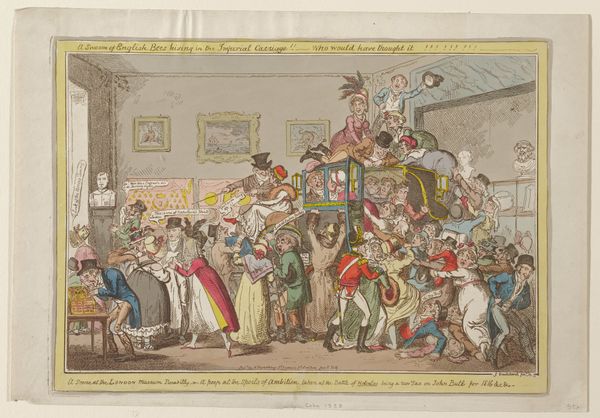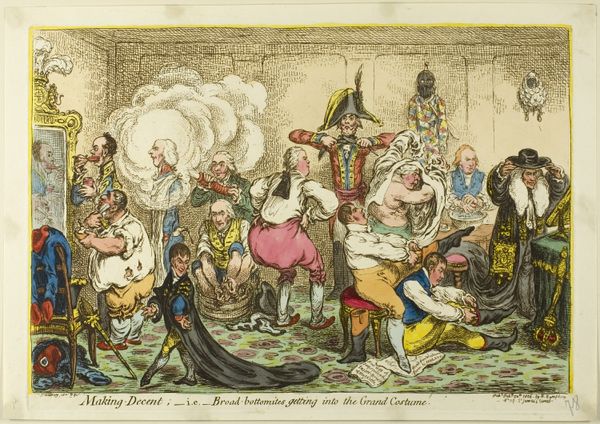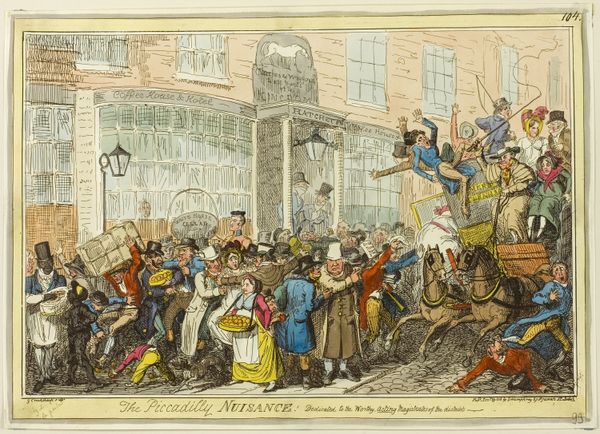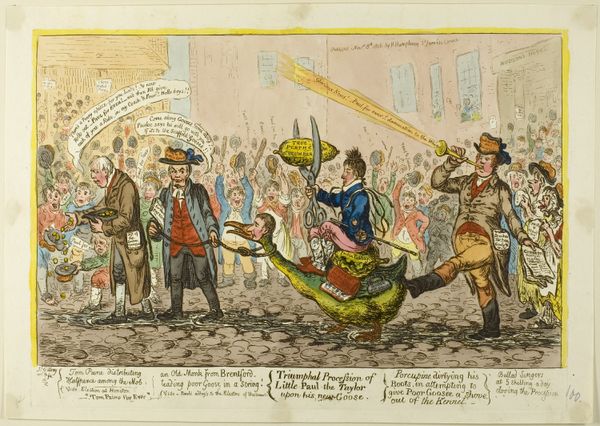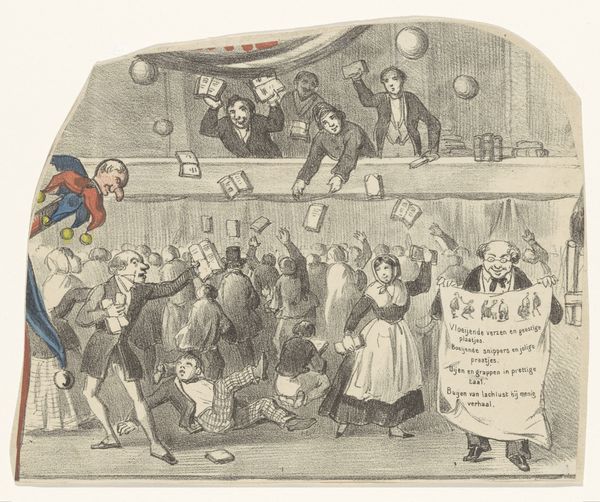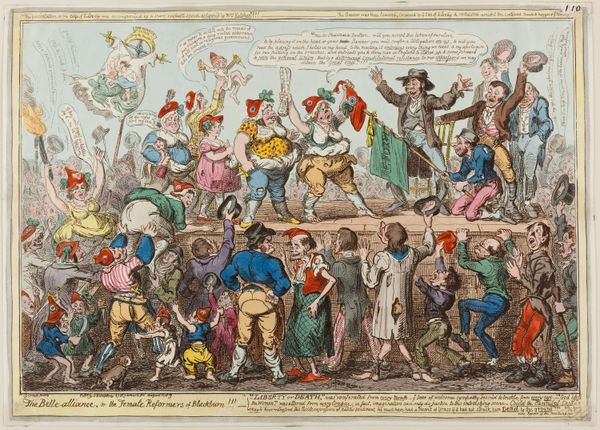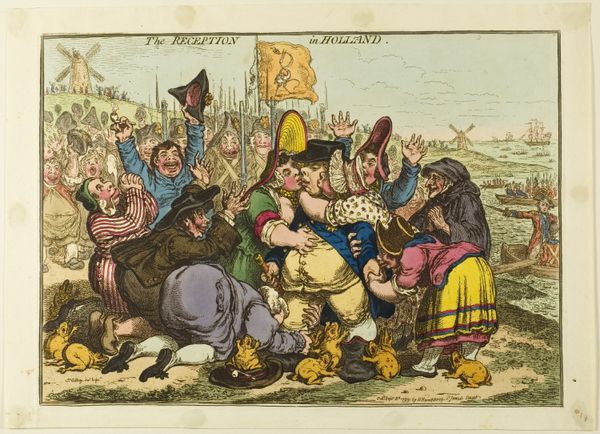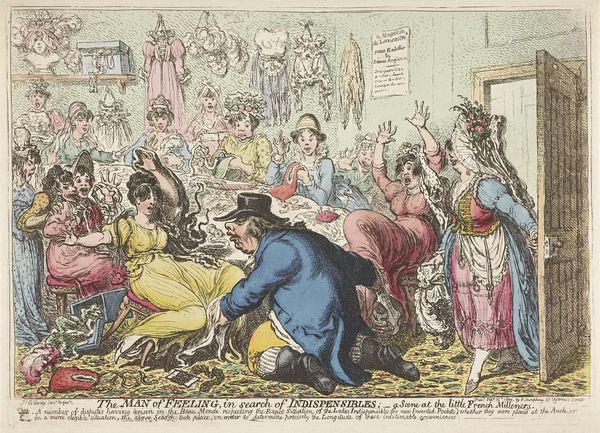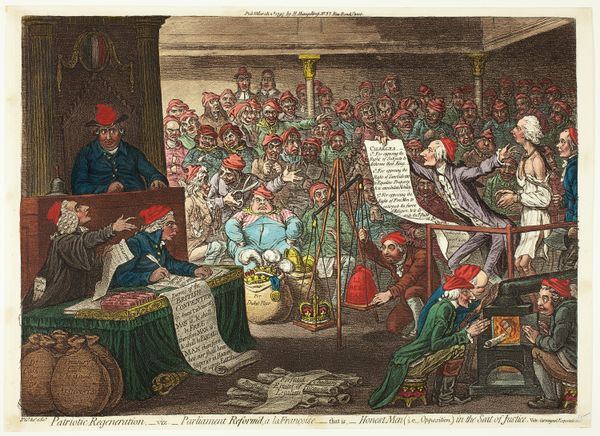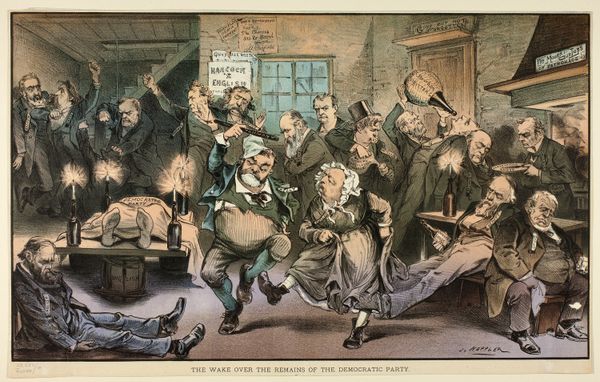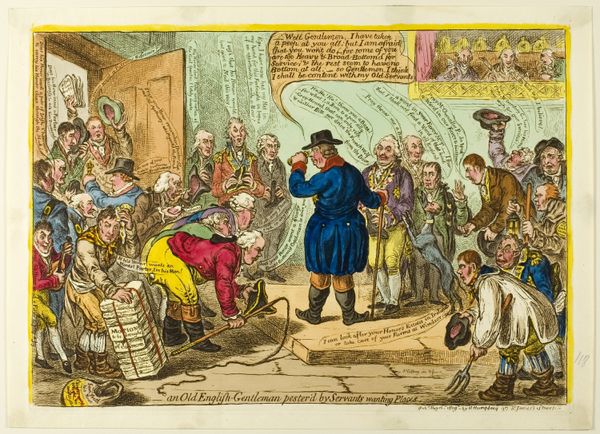
drawing, print, etching, paper
#
drawing
# print
#
etching
#
caricature
#
paper
#
genre-painting
Dimensions: 283 × 440 mm (image); 304 × 445 mm (plate); 318 × 464 mm (sheet)
Copyright: Public Domain
Curator: "The Union Club," a print possibly from 1801 by James Gillray. It's made with etching on paper. I notice immediately the sense of utter chaos. What are your initial thoughts? Editor: Well, it's definitely busy! Everyone seems incredibly drunk, some are passed out. What’s your interpretation of this piece? Curator: As a materialist, I'm drawn to think about who made this image, who was supposed to look at it, and how. This is a mass-produced print; it was likely sold fairly cheaply and distributed widely. Look at all the labor that would have gone into producing all these prints. What message about production do you think that suggests? Editor: That the artist probably made prints like these for money and for the everyday consumer, kind of like mass media? I guess it isn't so much a statement as it is product made and distributed as commodity. Curator: Exactly. And look at who's being caricatured. These are upper-class men, presumably members of this "Union Club." Gillray’s work highlights the behaviors of this elite social group, reflecting on what and who they are consuming. How does their excess reflect the society of the time? Editor: It seems like commentary about how wasteful wealthy men were being, how over the top, and how ridiculous and grotesque their behaviors looked to everyone else. And it seems really critical of these rich consumers. Curator: Precisely. And etching allows for incredibly detailed lines, mimicking and mocking the extravagance of their lifestyle with satirical and humorous flair. Seeing the work, does it feel like Gillray set out to produce 'art' with a capital 'A'? Or a consumer product designed to criticize and perhaps influence its audience? Editor: I think it definitely shows the impact and function art has with regards to economy and politics of the time period and to call it 'art' misses some of its function as consumer product that is mass produced to create social change. Curator: Well put! This analysis moves beyond the image as an aesthetic object to see its function in a social landscape of production, class, and consumption.
Comments
No comments
Be the first to comment and join the conversation on the ultimate creative platform.
